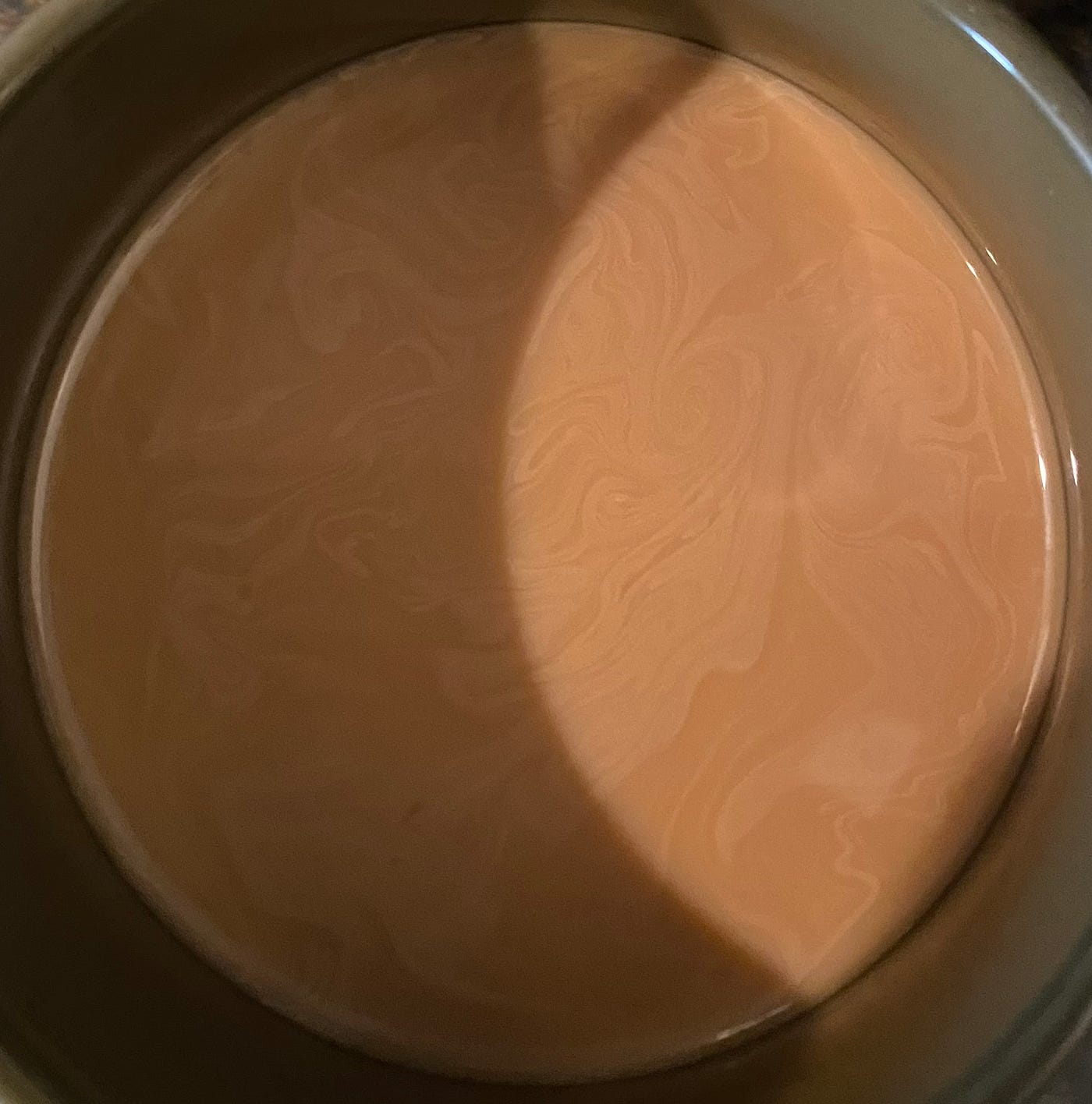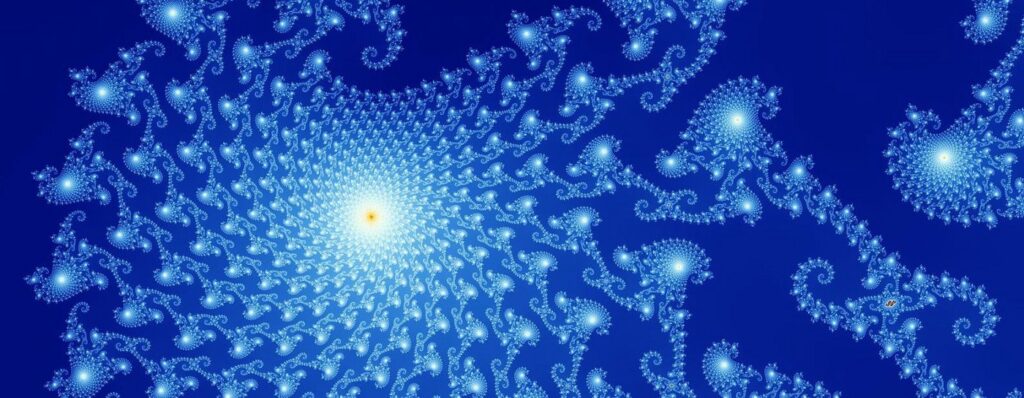I’m sitting at my computer, typing out this post. In front of me on the table is my laptop, a cup of tea, a pad of paper. Beyond that I see a wall, a window. Outside the window, trees, grass, clouds. Let’s imagine that this entire visual field — comprising all the objects I can see right now—is one big high-definition screen. How many tiny pixels would I currently be looking at? Millions? Perhaps billions?
Now, let’s imagine I zoom in to focus on one object in this scene. Let’s say I want to more closely inspect the cup of tea. I lean in so it occupies a greater portion of the visual field than it did before. At this level of zoom, I can now see previously unnoticed details—the glint on the surface of the liquid as it is hit by the afternoon sunlight, say. But beyond the cup, slightly out of focus, I still see the table, the rug, the wall. I have changed my orientation to the scene, but there is still just as much detail in my visual field, just as many pixels as before.
Imagine I now lean toward the tea even further. A caramel-colored ocean fills my visual field. It’s not just one solid color, though. The reflected patches of light dancing on the surface are more detailed and multifaceted than ever. I now can see tiny eddies and islands created by the cream I like to put in my Tippy Yunnan. I can see now see how the opacity of the tea fades out at the perimeter, right where the last millimeter of liquid meets the glass. Beyond the cup, I can see the curves of the table’s wood grain and the fibrous edge of the pad of paper. So many new details have come into focus, but overall, there are still the same number of pixels.
* * *
What if I leaned in further, beyond the capacity of my unassisted eyes? Using a magnifying glass or even a microscope, I could explore every square millimeter of this room. But, no matter how high the magnification, it’ll always be the same story. No matter how much I zoom in or out, the scene as a whole always will always be just as complex as ever. It’s an endless fractal, always millions or billions of pixels in my visual field awaiting further exploration.
Aren’t our scholarly investigations in the humanities like this too? To the uninitiated layperson, on first glance, our subject matter seems pretty straightforward. But, look closer, we say. Let’s unpack the particulars. Let’s examine the cultural context, the social dimensions, the historical dynamics. Let’s excavate new texts, dissect new details, reframe what we know in light of new perspectives. Doing so, we are constantly uncovering worlds upon worlds of new information to explore, new colors and contours to examine.
Each new generation of scholars, having been trained to see things at a certain level of zoom, yearns to “make progress” by exploring new territory. So, we burrow further into objects studied previously, or set out to explore new and unfamiliar zones. Over the decades of this zooming in and out ad infinitum, certain areas of the fractal become well-trodden. Just as the Mandelbrot set has its “seahorse valley” and its “spike,” we have our “Marx’s trench” and “Foucault peak.” Some of us never left those spots, spending entire careers examining the details right there. Others of us have sought greener pastures — perhaps secretly hoping to have a new segment of the fractal named after us some day.
Either way, we rarely pause to notice that dedicating ourselves to zooming further and further into a fractal is to commit ourselves to a project that is literally endless. That our to-do, to-read, and to-write lists will always be infinite. Nor do we often acknowledge that our “imposter syndrome” anxieties must always be true. That, no matter how fine-grained our analysis, there are always an endless number of deeper levels of detail we could have zoomed down into, endless new perspectives we might have taken, endless novel interpretations we might have forwarded.
We may feel that this one spot of the fractal we’ve chosen is the most important thing in the world, and we may tell ourselves that we’re going to discover great truths through our inquiry. But, our investigations will never will arrive at any Truth in the ultimate sense, will they? The humanities will make many important contributions to the world, for sure, but there will be no arrival at a final destination, no resolution into a final perspective. But yet, to be a humanist is to be entranced by the analysis of those endless details, to be thrilled by uncovering successive layers of analysis.
When journeying through a fractal, any notion of having “arrived” turns it into a labyrinth, a self-imposed prison. Actually, no matter how deep we go, we will always be continually opening up more and more areas that demand further investigation. The closer we look, the more indeterminate things will become.
… Just like my cup of tea. Which, come to think of it, is getting cold. It’s quite interesting at this level of zoom, and reveling in its details is not a bad way to spend the afternoon. But, I think I’m just going to close my eyes now and take a sip.

